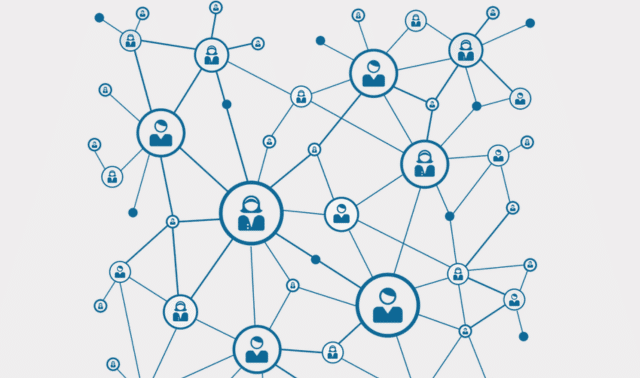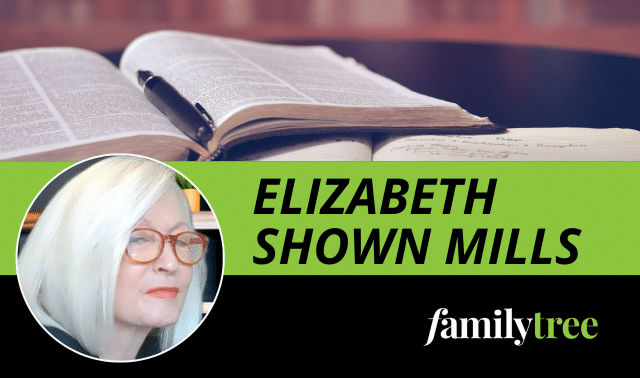Sign up for the Family Tree Newsletter! Plus, you’ll receive our 10 Essential Genealogy Research Forms PDF as a special thank you.
Get Your Free Genealogy Forms
"*" indicates required fields
Since the beginning of time, generations of genealogists have learned a basic rule of research: Start with yourself and work backward. Yet some brazen genealogists dare to flout this time-honored tenet. They’ll identify an ancestor and trace that person’s descendants—going so far as to look for living relatives. Imagine!
But wait. These same people report stellar genealogical successes with such unorthodox methods. Professional genealogist Megan Smolenyak Smolenyak is one of them—she endorses researching forward in time as a way to:
- get new genealogy details that didn’t make it to your branch of the family tree.
- find oral history subjects.
- collaborate on a family history website or book.
- recruit participants for a DNA surname study.
- build a family reunion attendee list.
- reunite an orphaned photo or heirloom with its family.
- add to your family photo collection.
- reconnect family branches that got separated over the years.
There’s even a name for what Smolenyak and her ilk are doing: reverse genealogy.
ADVERTISEMENT
We wondered if this unconventional technique really can do such great things for family trees, so we set out to talk to some practitioners. Their stories reveal five benefits of applying reverse genealogy principles to your own research problems.
1. Growing Your Family Tree
Miles Meyer of Jacksonville, Fla., has added more than 30,000 people to his family file by tracing descendants—not ancestors—of those on his pedigree chart. “I look for all the documentation I can find for every person I find in my line,” he says. “Then I add all of their children.”
He’s found it a great strategy for solving brick walls. “I tell people that if I find living cousins, they may have that missing link I need to continue back more generations,” he says. “Just last week I ran across someone researching the Laufersweiler family. He was able to supply me with another daughter in this family who married Augustus Havorsen Hilton, an immigrant from Norway”—yes, the same line that begat the hotel chain and Paris Hilton.
ADVERTISEMENT
Jane Lindsey, professional genealogist and president of the California Genealogical Society, is also familiar with record gaps—in particular, the one created by the 1906 San Francisco earthquake and fire. So when her client Barbara Dwelly needed help researching an application for the General Society of Mayflower Descendants, Lindsey went forward instead of backward.
The more Lindsey researched Dwelly’s grandmother, the less sense the data made. Newspapers filled in blanks and provided details about marriages and stepchildren, but missing records and different surnames in the same generation caused all sorts of problems. Then a birth notice for the grandmother identified her father’s name as Anton Lanné.
Searching the internet, Dwelly found a German man’s posting about his father’s Lanné line. Anton Lanné was also named on an Australian site, where a woman who’d been researching the family for 30 years noted, “We think he went to San Francisco.” Dwelly’s Mayflower connection was made through the work of researchers on three continents.
Lindsey’s fellow society members Lavinia Schwarz, Judy Bodycote-Thomas and Richard Rees used reverse genealogy to find the descendants of Luis Maria Peralta, a Spanish comisionado and early Bay-area resident, and his 17 children.
They wanted to build the story of Peralta Hacienda Historical Park in Oakland, Calif., which preserves part of Peralta’s 45,000-acre Rancho San Antonio land grant. The team looked up family members in federal censuses through 1930, the most recent census open for research at the time. For descendants since then, they used voter registrations, city directories, people-locator websites, genealogy databases on Ancestry.com and web search engines.
The result? Compiled information on 700 relatives who trace their line to Peralta.
2. Reuniting Lost Family Branches
Lauren Maehrlein, director of education at the New York Genealogical and Biographical Society, started her search for relatives because of her immigrant great-great-grandfather’s probate papers. The papers mentioned only his grandchildren who lived in the immediate neighborhood—it left out Maehrlein’s grandfather and other relatives residing a couple of miles away. My grandfather and his siblings got skunked, she thought.
Descendants of several grandchildren were still alive and willing to swap stories. Next, Maehrlein widened her search to all the descendants of the great-great-grandfather’s generation. A pattern jumped out: No one in the family moved far from home. Probate records, census records and phone books showed most of Maehrlein’s living US relatives not only reside in the same area as their ancestors, but often in the same houses.
Maehrlein created a cousin network and eventually found her living relatives in Germany. They also stay close to home: A grandmother’s cousin still lived in the house where she was born. Apparently, Maerhlein surmises, whoever handled her great-great-grandfather’s estate was too accustomed to the pattern. “[He or she] either carelessly or deliberately left off the grandchildren who weren’t in the immediate area,” she says.
On a visit, a German cousin showed Maehrlein a 1930s New Jersey newspaper clipping she’d saved—one of the American relatives mailed it to the family back home. But in the ensuing decades, the branches lost touch. Maehrlein’s reverse genealogy re-established the connection.
Massachusetts resident Marian Pierre-Louis, of Fieldstone Historic Research, has found so many relatives that her birthday present for her dad, a family history website, has become a group project. “For a while, I was having two new distant cousins a month contact me,” Pierre-Louis says.
Pictures the newfound cousins sent show resemblances dating back several generations. “I found a picture of my cousin Dimmick Edwards from a line that split off back around 1800,” Pierre-Louis says. “He looks almost exactly like my brother does today. Those are some strong genes.”
3. Finding Genetic Cousins
Professional genealogist Laura Prescott took a mitochondrial DNA (mtDNA) test, and thought that if she could get all the female descendants of her fourth-great-grandmother Susan Sutphen to take a DNA test, she’d confirm family relationships. You’re probably thinking, wouldn’t a paper trail confirm relationships? True, but with mtDNA testing, adoptions would be easier to spot—they’d become immediately apparent when the DNA didn’t match.
“If you’ve ever done mtDNA testing,” Prescott says, “you know you come up with a lot of hits that aren’t likely valid because the database is so small. So I decided to go to the farthest-back maternal ancestor I could.”
Sutphen had six daughters, five of whom also had daughters. It added up to a challenge. It’s a time-consuming project because of the married women’s name changes. “The trick is identifying the husbands and then finding the kids,” Prescott says.
She calls this project “a work in progress and a concept with a lot of potential, but one that requires a lot of work.” Most of her success comes from looking at census records, tracking down probate documents (to verify kids and spouses) and consulting vital records.
4. Discovering Health History
It can be hard to find reliable causes of ancestors’ deaths, what with spotty availability of death certificates, archaic medical terms and lack of diagnostic procedures. But examining your cousins’ death records also can reveal unexpected medical conditions that run in the family.
Professional genealogist Kathleen W. Hinckley specializes in finding missing heirs and verifying legal kinship. For one client, she traced three generations forward, locating 237 living relatives in the United States and Ireland. A trend startled her: A legacy of deaths by suicide persisted in both branches, though neither knew of the other’s existence.
“I did an analysis that showed the suicides were all males between the ages of 25 and 53,” Hinckley says. She found the family’s suicide rate was three times higher than average—information that might help the descendants take precautions to safeguard their health.
5. Solving Brick Wall Mysteries
You’ve probably gathered that it doesn’t have to be one way or the other—most of the researchers we spoke with use a combination of traditional and reverse research to accomplish their goals.
That’s how the genealogy volunteers who formed Unclaimed Persons help coroners find the kin of unclaimed deceased individuals. The group began when professional genealogist Smolenyak stumbled across a newspaper article on a person who died in Lackawanna County, Pa., with a family Bible as one of the few clues to possible relatives. After getting the coroner’s OK, she began tracing names written in the Bible back in time. Then switching gears, she went forward to find a descendant of the Bible’s original owners.
Smolenyak’s reverse genealogy endorsement comes through 10 years working for the Army to track down families of missing WWI and WWII, Korean War and Vietnam War soldiers. Specifically, she’d have to find the primary next-of-kin and three people with the same mtDNA as the soldier to return his or her remains to loved ones. Finding next-of-kin often meant locating a sibling or child, but tracing mtDNA lines would often necessitate going back in time, then forward. One case had Smolenyak researching a family in the 1700s to find a single mtDNA line that persisted into the present.
If reverse genealogy can work such wonders for all the genealogists mentioned herein, it can do the same for you. Maybe it’s time for you to buck the trends and throw it into reverse.
6 Reverse Genealogy Resources
Many of the same resources you use to research back in time also can help you research forward. The folks we spoke with favor these sources:
Censuses
Searchable indexes to federal censuses from 1790 through 1950 are handy for tracing families’ movements and, in 1850 and later, learning children’s names. You’ll find databases on Ancestry.com, FamilySearch, MyHeritage and HeritageQuest Online, which is free through many public libraries.
Search Engines
Using a general search engine is a relatively easy way to find people. Start by searching for an ancestor’s name (inside quotation marks) or a surname followed by family or genealogy, such as “Bellows family.” You may turn up websites, genealogy charts and images.
Newspapers
Search for papers by location at the Library of Congress’ Chronicling America website; some are digitized there, too. You’ll find searchable, digitized newspapers on subscription websites such as GenealogyBank and Newspapers.com.
Online Directories
Search for living individuals by name and location in online phone books such as Whitepages. Some listings will be out of date, so you may have to try a few names to get success. Also, these sources give numbers for landlines, not cell phones. Don’t forget to search for people in social networks such as Facebook and LinkedIn, too.
People Locators
These sites index contemporary public records that contain names, ages and addresses. Usually, you can search and get limited information free, then pay for more details. Beware of errors such as incorrect maiden names and middle initials. Note, too, that it’s not unusual for two people in a community to have the same name. Zabasearch is one site to try.
Probate Records
Court documents related to a deceased person’s estate can help build a network of relatives. Use a reference such as Red Book, 3rd edition, edited by Alice E. Eichholz to find where your ancestor’s county keeps probate records. Many are on FamilySearch; run a Place search of the online catalog for the county and look for a probate heading.
Case Study: Reverse Genealogy and Census Records
By Lisa Louise Cooke
Several years ago, I was trying to locate my great-grandfather in the 1880 US census on microfilm without success. I found his parents and his siblings who were still living at home. Since Great-grandpa was 17 at the time, I expected to find him there, too. I searched for his future wife thinking perhaps they married younger than I thought. But she was living with her parents. Great-grandpa was nowhere to be found.
In an attempt to find him, I traced great-grandfather’s father back to the 1860 census, where he was listed in the household with his parents. I noted everyone in the household. Then I systematically researched forward, locating each sibling in the 1870 and 1880 censuses.
Sure enough, in 1880, I found my then-17-year-old great-grandfather living with his uncle (his father’s brother) in a neighboring town. Because of a variation in his name spelling, I probably never would’ve found him in online censuses.
Take a look at this picture of an ancestor’s potential family “cluster.” Every one of these relatives has the potential to help you make progress on researching that ancestor.

A version of this article appeared in the July 2009 issue of Family Tree Magazine. Last updated: February 2025
Related Reads
ADVERTISEMENT











